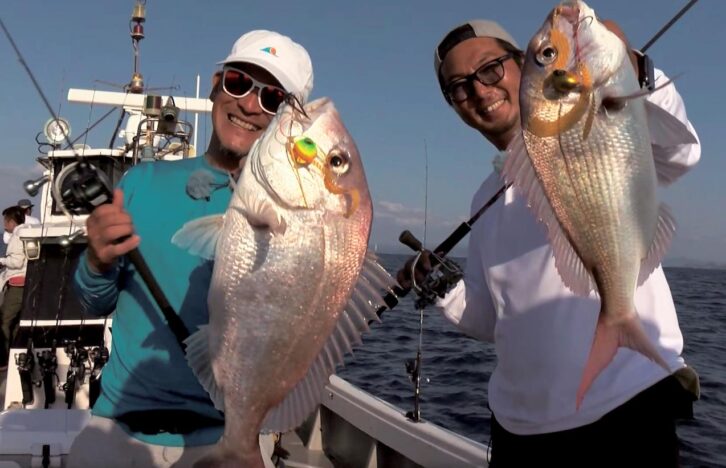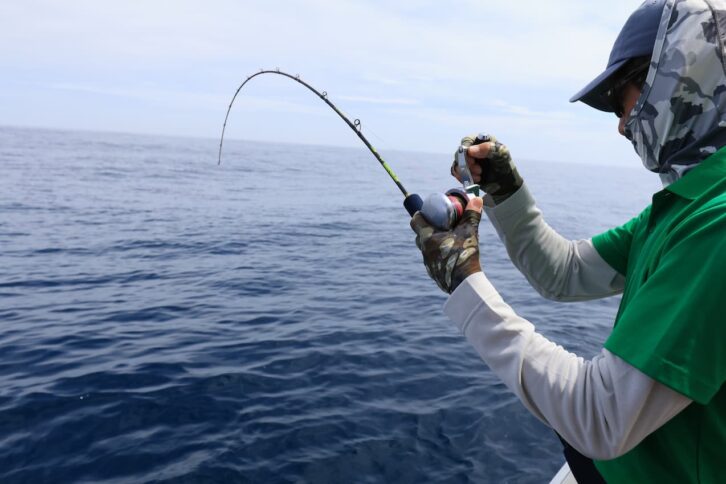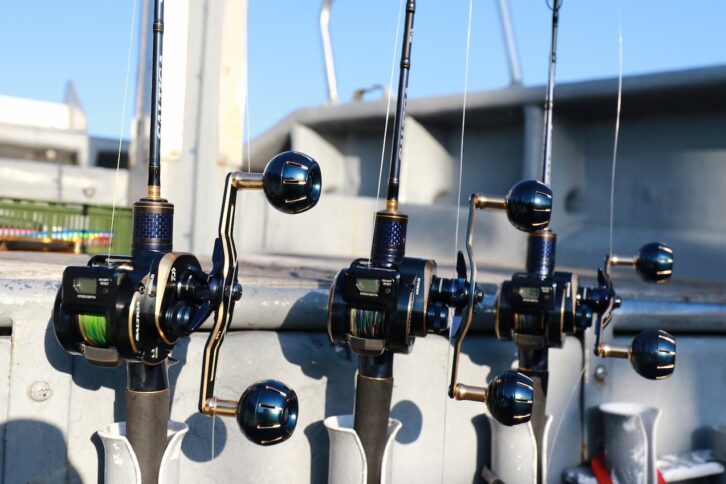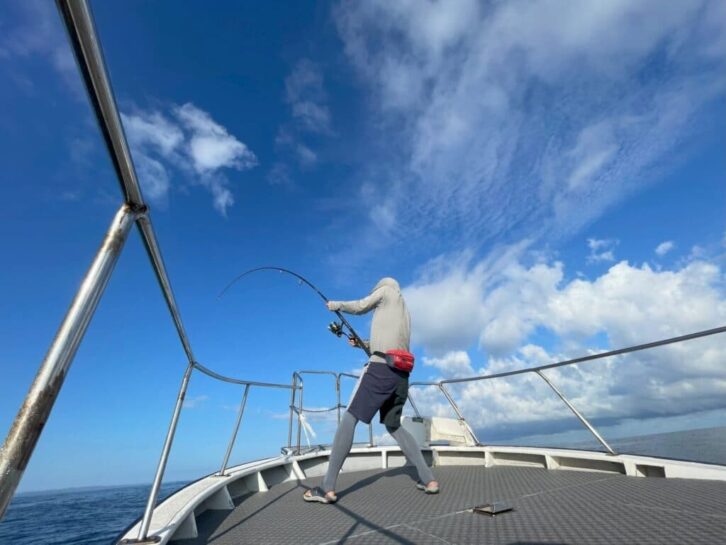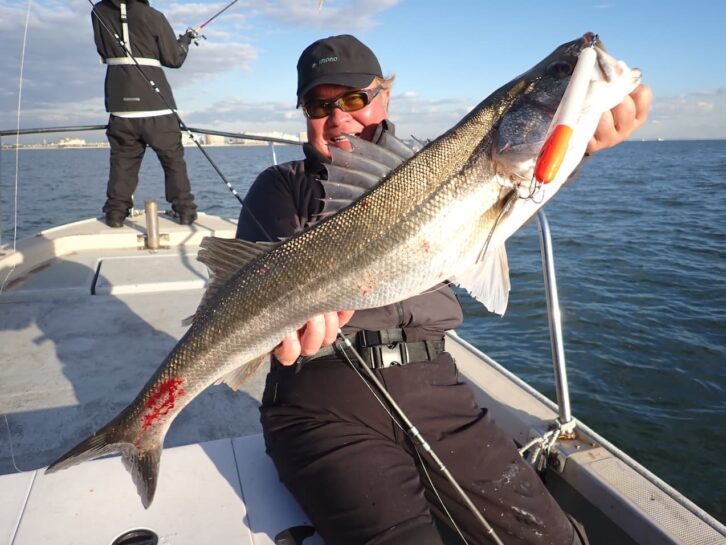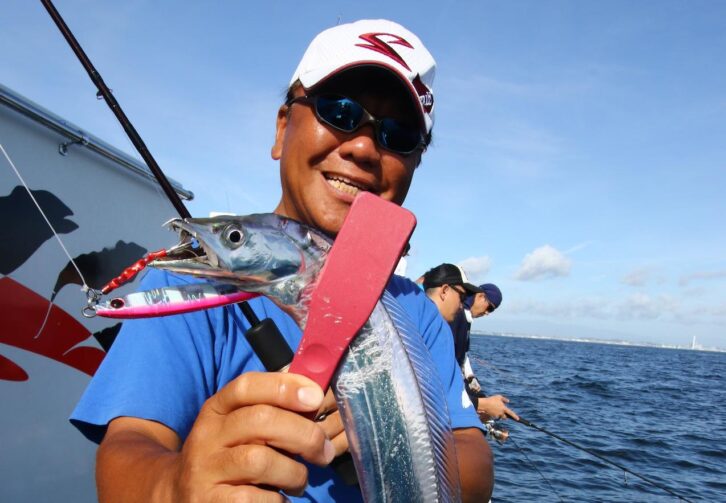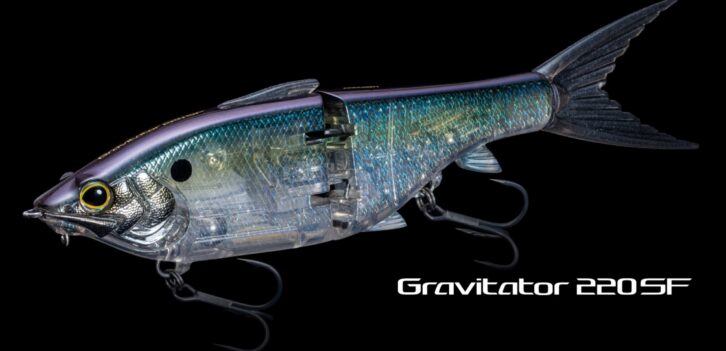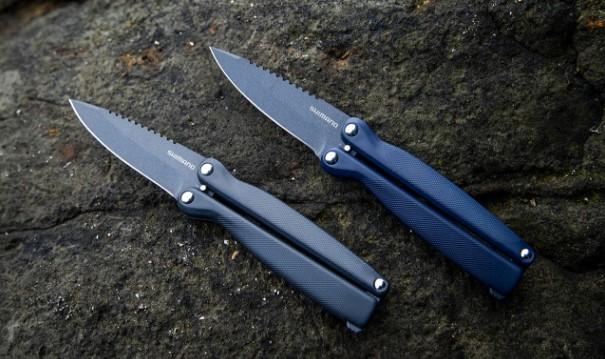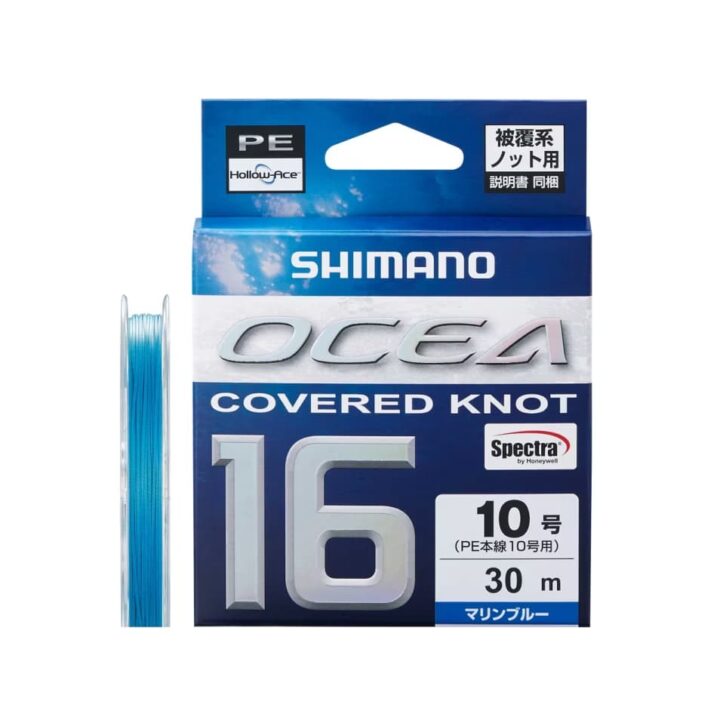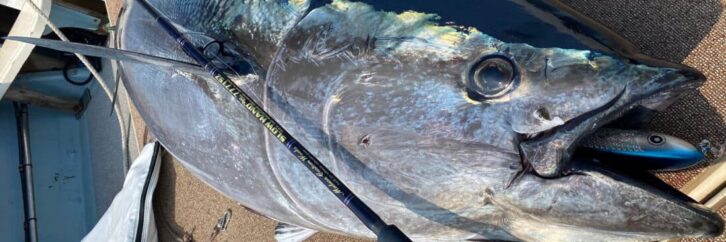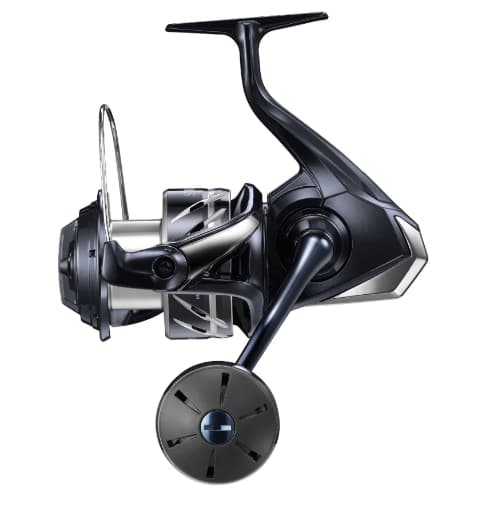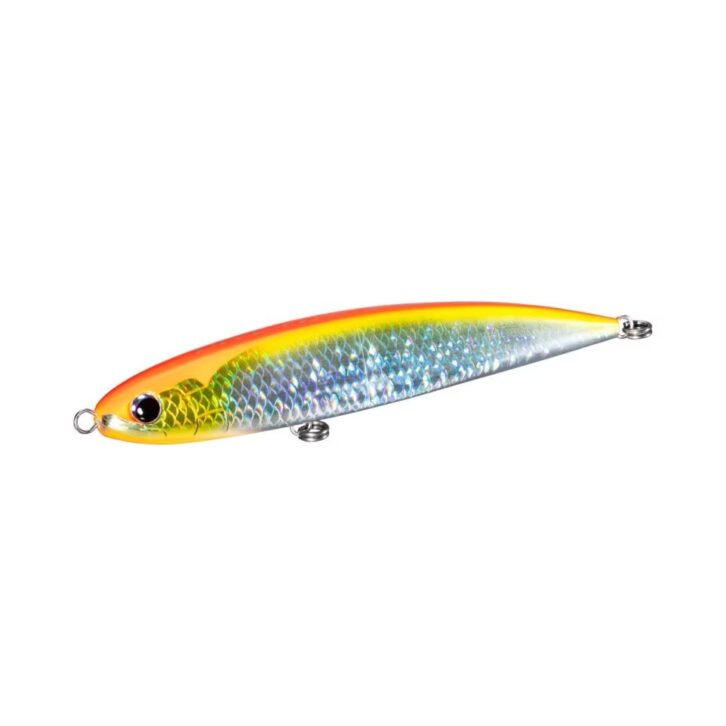BREAK YOUR RECORD
Explained by Kazunari Shimizu! NEW Jig Swim Chopper and Jive Chopper. And the 60kg Yellowfin Caught off Minami-Izu!
Mr. Kazunari Shimizu, a tester of Daiwa Saltiga, informed us that he caught a 60 kg yellowfin tuna while jigging in Minami-Izu. This size of fish is hard to find when jigging. And this was in Minami-Izu. I immediately contacted him and he excitedly told me how it went. The hit was a Saltiga Swim Chopper, which went on sale in May 2024.

INDEX
- A jig that he had whittled down and created himself. And an encounter with a large yellowfin.
- The Swim Chopper, a jig with excellent maneuverability, was designed to provide a sense of escape in tidal currents.
- Jive Chopper” controls the jig’s violent movement and makes it easy to move the jig continuously.
A jig that he had whittled down and created himself. And an encounter with a large yellowfin.
In 2024, Mr. Kazunari Shimizu, a member of the Daiwa Saltiga field staff, announced the release of two jigs. They are the Swim Chopper and the Jive Chopper. Shimizu has been using slow jigging as his weapon of choice, dropping jigs in various fields and targeting the large fish that are there. When Mr. Shimizu stands in the field, he observes the tide conditions while jerking. He then adjusts his techniques, tackle changes, etc., to get closer to the conditions where the target fish will hit. Is the tide good for fishing, or is it difficult to fool the target? If it is a good tide, you can use the jig that has produced results so far. However, there are times when we decide that this jig does not give us the right feeling of escape when jerking, or that it catches the tide too much and does not produce the ideal jig movement. The Swim Chopper and Jive Chopper were developed as the second jig to be dropped in the field to be used in such situations. Mr. Shimizu took such jigs with him to the waters off Minami-Izu in the spring of 2024 to test rods and reels, as well as to shoot promotional materials after the jigs were released.
I was hoping to catch at least one good-sized yellowfin,” said Shimizu, who was fishing on the Megamaru out of Minami-Izu this time. When we arrived at the point, the tide was not too bad. I caught a bigeye the first time and wondered if the tide was dark. Five minutes later, I caught a yellowfin fish weighing about 23 kg on a 350 g Swim Chopper in zebra glow color, and I felt like today was a good day. The feel of the jig’s slackness and tackle balance were right, and I had the feeling that I could catch more fish.
He then had a Daiwa staff member who was testing the jig next to him put on a swim chopper and told him to make sure the line was free of dandruff and to use a falling action, and a small yellowfin hit the boat.
The tide was not running very well,” he said, ”and there were occasional radio reports of yellowfin and dragonfish being caught, and our boat was also catching yellowfin occasionally. In my opinion, when the tide is working, yellowfin will bite by fishing on a vertical axis, but when the tide is not working, the key to getting a hit is to play the jig firmly to make it horizontal, and the length of time it is horizontal. To do that, you need a jig that can do that, and a rod and reel that can do that. It’s all about balance.”
As he continued to shimmy, the line stopped and the fish hit the water at a depth of 140 m. Shimizu was fishing in a deep sea, but he was not sure how long it would take to catch the fish. The depth was 140 meters, and Mr. Shimizu said he had been fishing from 120 meters to 90 meters before the fish hit at 110 meters.
When the fish took a bite, I thought it must have weighed 30-40 kg, judging from the strength of the fish’s movement and its weight when I started reeling it in. But as I kept reeling it in, I realized that it was not 30 or 40 kg…. The drag was over 13 kg when reeling in, but I kept reeling it in and out 5 or 6 times. I was able to reel up to 30m remaining, but then the fish would run another 90m, so it was very tough. However, I felt that I had less than 20% of my strength remaining, so I decided it was time to give it my all. I also thought, “What if it was a bluefin tuna? I didn’t want it to be a blackfin tuna. Still, I remembered how frustrated I had been with my previous attempts, and I tried my best. It took me an hour and a half to bring it up.
After all that time, a 60-kg yellowfin came up. It was a size that is not easy to catch by jigging. It was a fish worthy of praise. It was also a record for Mr. Shimizu himself. By the way, the jig he used was a Swim Chopper 350g in zebra glow. The line was 12 Braid No. 4 with 80lb fluorocarbon leader. The hooks were set up with a single assist on the front and rear.

The Swim Chopper, a jig with excellent maneuverability, was designed to provide a sense of escape in tidal currents.
So, what kind of jigs were used to catch fish this time?
First of all, the Swim Chopper is a slim, round shape with no corners, designed to be center-balanced.
The jig has a darting action, as the standing edges increase the pulling resistance. The Swim Chopper is a model with as few edges as possible to eliminate such unnecessary dart action. This allows the angler to jerk with a good sense of escape even in complex tides and produce jig action as desired.
Incidentally, by placing the weight balance in the center, the lure can be flown sideways with certainty and ease, and from there it transitions to a fall action. The jig does not flap wildly, but moves in a straightforward manner, making it difficult for fish to miss it.

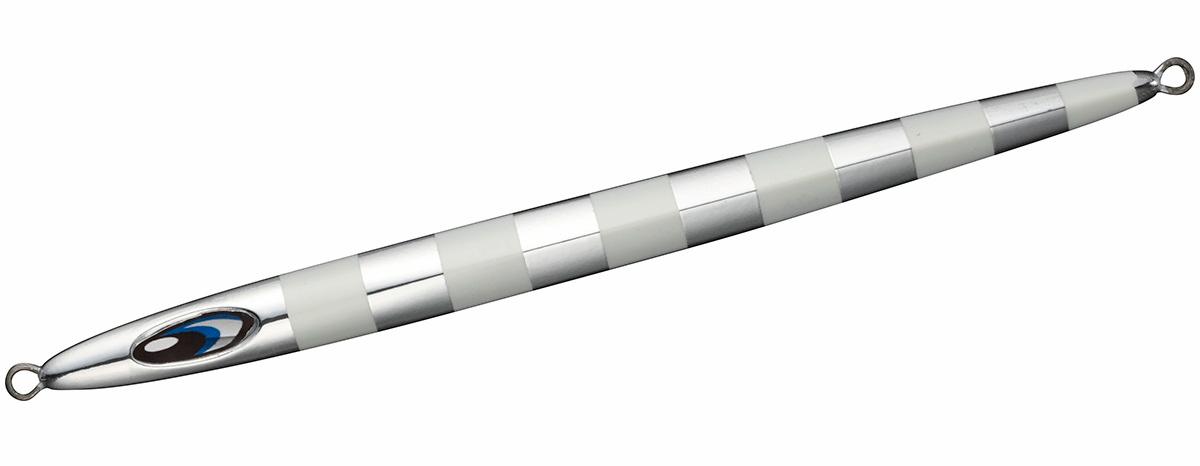

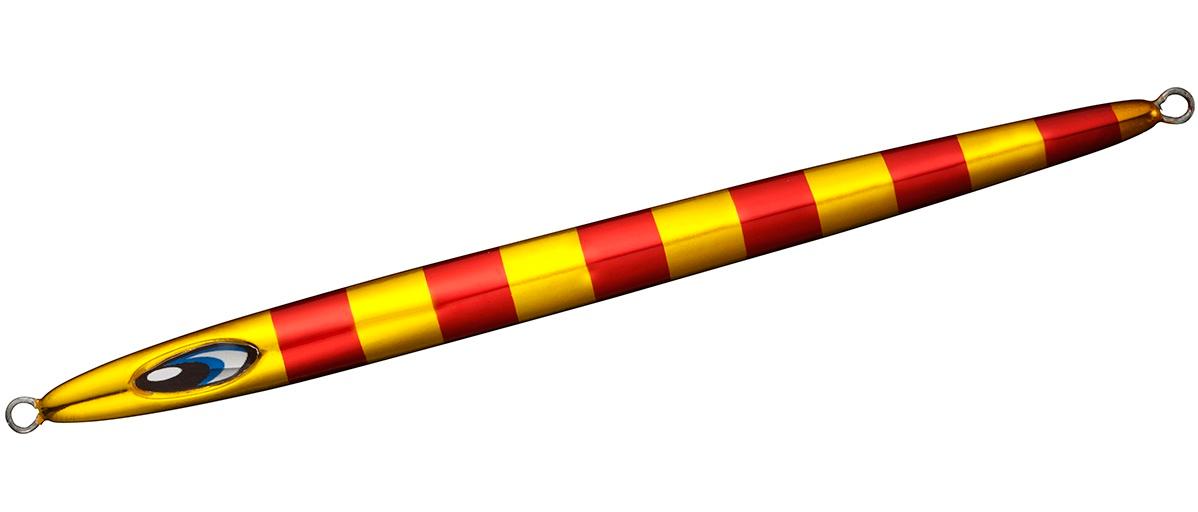
Available in sizes 200g, 230g, 260g, 300g, 350g, and 400g, and in a total of six colors.
https://www.daiwa.com/jp/product/0v9v9ys
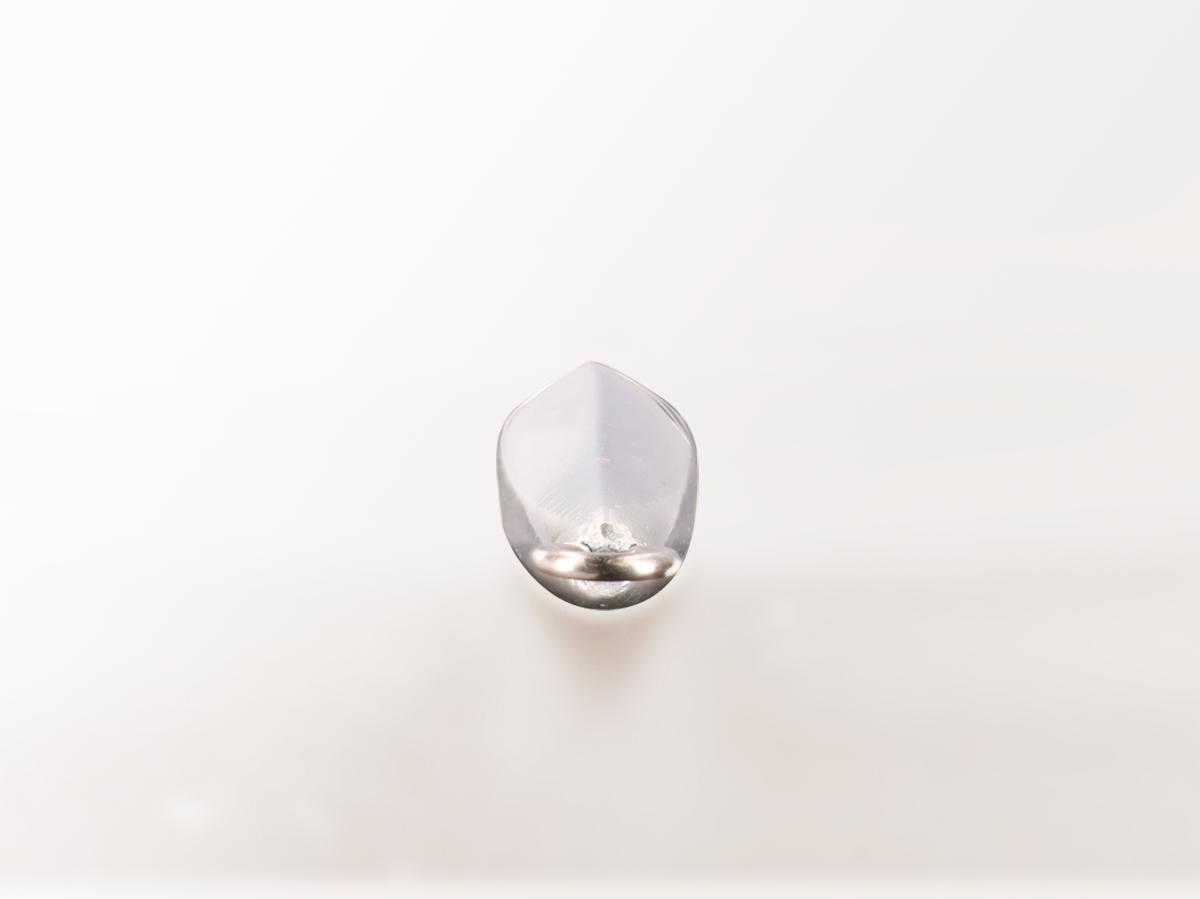
The design has a round shape with a keel in the center. This suppresses excess movement and produces a more direct jerk. The lure can be lured with the desired movement.
Jive Chopper” controls the jig’s violent movement and makes it easy to move the jig continuously.
The Jive Chopper, released at the same time as the Swim Chopper, is another jig designed to work in poor tidal conditions. It uses a rear-balanced design, which allows the jig to reach the bottom or the desired depth. The rear-balanced design is based on the idea that a jig with a head balance or center balance will run on its own and stay in the air for a longer time, but a longer stay in the air delays the next initial movement, and if the fall is too long, the fish may not see the jig coming.
The rear balance allows the lure to move quickly with the input of the jerk, and the low self-propelled time makes the next action easier. What we also paid more attention to was the rounded design with edges removed. This controls extra darting and flapping movements. This movement makes it harder for fish to see it, and it also reduces drag.

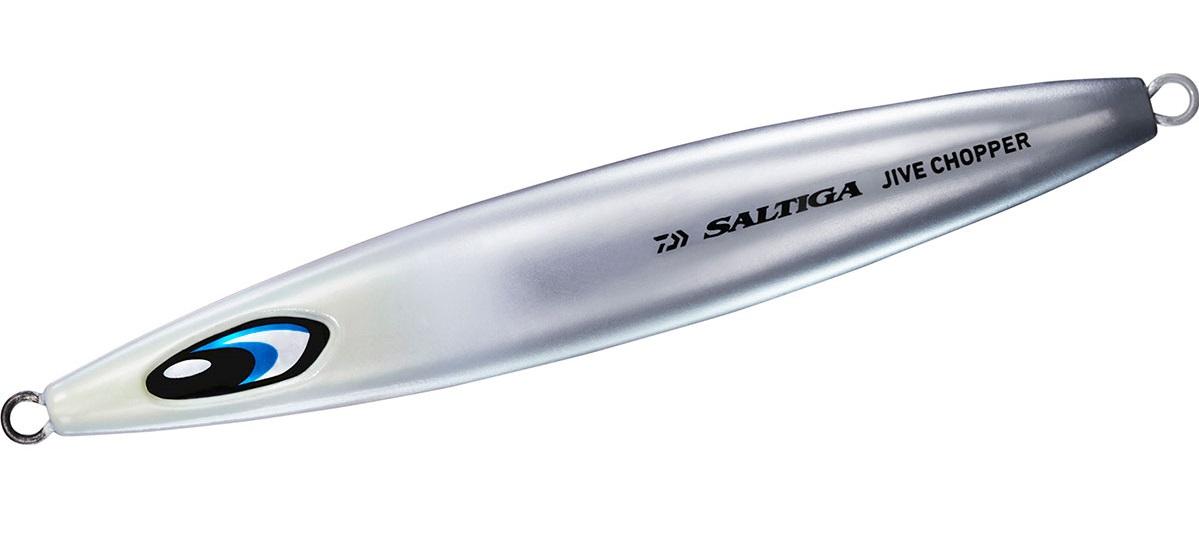

Available in sizes 150g, 180g, 200g, 250g, 300g, 350g, and 400g.
https://www.daiwa.com/jp/product/rnfg2fp
After that, off the coast of Minami-Izu, yellowfin of around 30 kg were caught in small numbers. However, there should be some migration of large yellowfin like the one in this article. If you don’t challenge yourself, you will never have a chance to catch such a size. Please prepare a swim chopper and a jib chopper that can handle the challenge.




